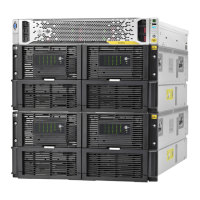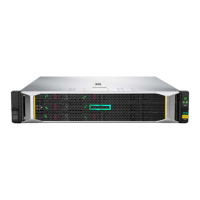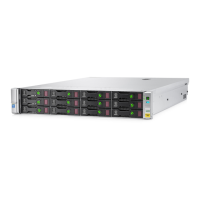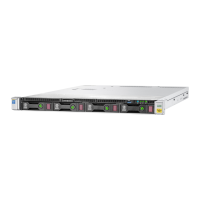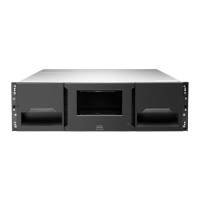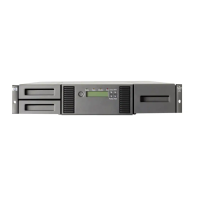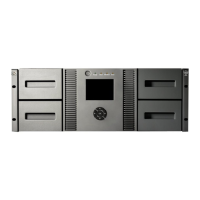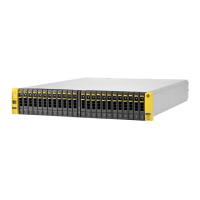Once you have set up a replication configuration between Source and Target HP StoreOnce Backup
Systems, it is initiated automatically whenever a backup takes place.
NOTE: If the replication Source Appliance fails and goes offline whilst it was performing a NAS
replication job, the replication target share appliance may be left in an inconsistent state. This state
may result in failure to recover from some files in the share or perform a list of files in the share
because relationships between files and folders have been lost. This will automatically be repaired
by the target appliance as soon as it detects the loss of the source appliance, however it may take
up to 10 minutes to complete this repair during which time the share will not be available for
access.
Replication and Virtual Tape Devices
HP StoreOnce Replication allows cartridges in slots on a library device that has been configured
on one HP StoreOnce Backup System (the Source Appliance) to be replicated to corresponding
mapped slots on a library device on another HP StoreOnce Backup System (the Target Appliance)
at another location. Data is always mapped at slot level.
Replication-Target libraries are not visible to the host, unless you configure devices to make it
visible. See the HP StoreOnce Backup System user guide for more information.
Once you have set up a replication configuration between Source and Target HP StoreOnce Backup
Systems, it is initiated automatically whenever a cartridge is returned from a drive to a slot that
has been configured for replication.
Preparing for replication
There are 5 major considerations:
• Make sure you understand the basic concepts and terminology.
• Decide which deployment model is appropriate for your organization.
• Map your replication workflow and decide how the first backup will be seeded onto the target
appliance.
• Configure and monitor replication on the Web Management Interface
• Define your Disaster Recovery strategy if the Source Appliance fails.
Replication and firewalls
If replication needs to take place through a firewall, the network administrator will need to open
(TCP) ports 9387 (Command protocol) and 9388 (Data protocol) to allow the replication traffic
to pass to and from the HP StoreOnce Backup Systems. If necessary and the Backup Systems conflict
with another device on the network, these ports can be changed from the defaults when you create
the replication pairing or from the Local Appliance's General Settings page.
Restricting access to replication sources
Source Appliance Permissions are disabled by default. In this state, there is no control over mapping
between share and library devices on the Target and the Source Appliances.
However, it is possible to lock down the ability to create share and library mappings so that, when
the wizard is run and mappings are configured, the Target only has access to a list of sources that
are allowed to replicate to it. See the HP StoreOnce Backup System user guide for details.
HP Replication Manager (HP D2D4xxx Series only)
HP Replication Manager (Replication Manager) is a standalone software application that is available
as part of the StoreOnce Replication license with HP D2D4xxx Backup Systems. Replication Manager
provides basic management capabilities in a replication environment, and provides an easy way
to manage up to 300 D2D devices that are being replicated across multiple sites. Using Replication
HP Replication Manager (HP D2D4xxx Series only) 23

